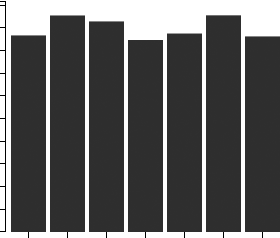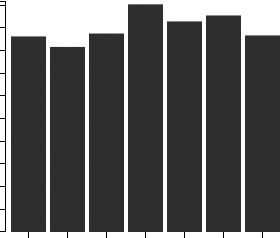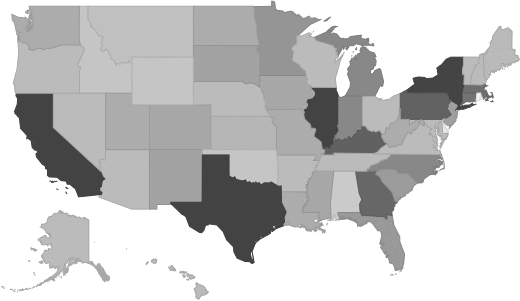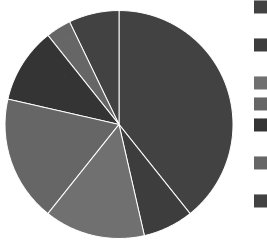Commercial Printing Industry - Market Research Report
Industry Overview
This industry comprises establishments primarily engaged in printing on apparel and textile products, paper, metal, glass, plastics, and other materials, except fabric (grey goods). The printing processes employed include, but are not limited to, lithographic, gravure, screen, flexographic, digital, and letterpress. Establishments in this industry do not manufacture the stock that they print, but may perform postprinting activities, such as folding, cutting, or laminating the materials they print, and mailing.
Source: U.S. Census BureauMarket Size and Industry Forecast
This research report analyzes the market size and trends in the Commercial Printing industry. It shows overall market size from 2020 to the present, and predicts industry growth through 2030. Revenues data include both public and private companies.
| Historical | Forecasted |
|---|
| 2020 | 2021 | 2022 | 2023 | 2024 | 2025 | 2026 | 2027 | 2028 | 2029 | 2030 |
|---|
| Market Size (Total Revenue) | Included in Report |
| % Growth Rate |
| Number of Companies |
| Total Employees |
| Average Revenue per Company |
| Average Employees per Company |
Source: U.S. government financial dataIndustry Revenue ($ Billions)

Industry Forecast ($ Billions)

Advanced econometric models forecast five years of industry growth based on short- and long-term trend analysis. Market size includes revenue generated from all products and services sold within the industry.
Geographic Breakdown by U.S. State
Market size by state reveals local opportunity through the number of companies located in the region. Each state's growth rate is affected by regional economic conditions. Data by state can be used to pinpoint profitable and nonprofitable locations for Commercial Printing companies in the United States.
Commercial Printing Revenue by State

Distribution by Company Size
| Company Size | All Industries | Commercial Printing |
|---|
| Small Business (< 5 Employees) | Included |
| Small Business (5 - 20) |
| Midsized Business (20 - 100) |
| Large Business (100 - 500) |
| Enterprise (> 500) |
Commercial Printing Industry Income Statement (Average Financial Metrics)
Financial statement analysis determines averages for the following industry forces:
- Cost of goods sold
- Compensation of officers
- Salaries and wages
- Employee benefit programs
- Rent paid
- Advertising and marketing budgets
The report includes a traditional income statement from an "average" company (both public and private companies are included).
| Industry Average | Percent of Sales |
|---|
| Total Revenue | Included |
| Operating Revenue |
| Cost of Goods Sold (COGS) |
| Gross Profit |
| Operating Expenses |
| Operating Income |
| Non-Operating Income |
| Earnings Before Interest and Taxes (EBIT) |
| Interest Expense |
| Earnings Before Taxes |
| Income Tax |
| Net Profit |
Average Income Statement

Cost of Goods Sold
Salaries, Wages, and Benefits
Rent
Advertising
Depreciation and Amortization
Officer Compensation
Net Income
Financial Ratio Analysis
Financial ratios allow a company's performance to be compared against that of its peers.
| Financial Ratio | Industry Average |
|---|
| Profitability Ratios | Included |
| Profit Margin |
| ROE |
| ROA |
| Liquidity Ratios |
| Current Ratio |
| Quick Ratio |
| Activity Ratios |
| Average Collection Period |
| Asset Turnover Ratio |
| Receivables Turnover Ratio |
| Inventory Conversion Ratio |
Products and Services Mix
Product lines and services in the Commercial Printing industry accounting for the largest revenue sources.
| Product Description | Description | Revenue
($ Millions) |
|---|
Commercial lithographic printing | Included |
Magazine and periodical printing (lithographic) |
Magazine/periodical prtg (lithographic), excl. Sunday mag/comics |
Magazine/comics prtg (lithographic), for Sunday newspapers |
Magazine and periodical printing (lithographic), nsk |
Label and wrapper printing (lithographic) |
Label printing (lithographic) |
Printed rolls/sheets for packaging (printing only) (lithographic) |
Label and wrapper printing (lithographic), nsk |
Catalog and directory printing (lithographic) |
Salary information for employees working in the Commercial Printing industry.
| Title | Percent of Workforce | Bottom Quartile | Average (Median) Salary | Upper Quartile |
|---|
| Management Occupations | 5% | Included |
| Chief Executives | 0% |
| General and Operations Managers | 3% |
| Sales and Related Occupations | 6% |
| Office and Administrative Support Occupations | 18% |
| Information and Record Clerks | 6% |
| Customer Service Representatives | 5% |
| Customer Service Representatives | 5% |
| Production Occupations | 52% |
| Printing Workers | 37% |
| Printing Workers | 37% |
| Printing Press Operators | 23% |
| Print Binding and Finishing Workers | 9% |
| Other Production Occupations | 9% |
| Miscellaneous Production Workers | 5% |
| Transportation and Material Moving Occupations | 7% |
| Material Moving Workers | 6% |
| Laborers and Material Movers, Hand | 5% |
Government Contracts
The federal government spent an annual total of
$49,306,710 on the commercial printing industry. It has awarded 2,788 contracts to 472 companies, with an average value of $104,463 per company.
Top Companies in Commercial Printing and Adjacent Industries
| Company | Address | Revenue
($ Millions) |
|---|
Included |



